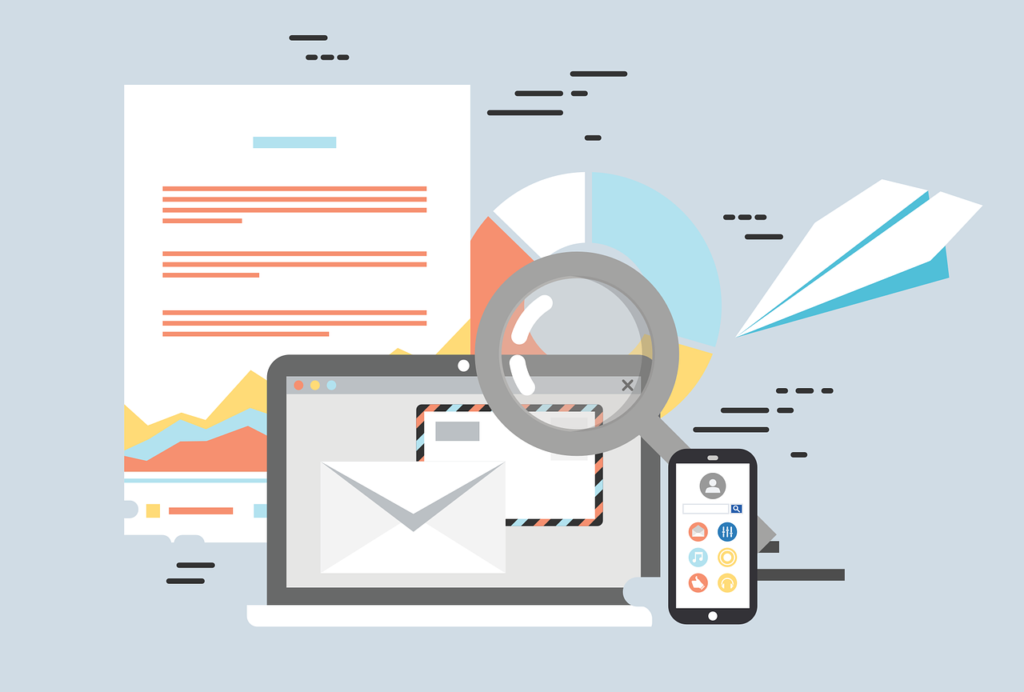Hey there! Are you grappling with the decision of choosing between Omnisend and Sendy for your email marketing in 2024? Worry not! We’re here to dive deep into these tools, comparing their features, usability, and overall value to help you make the best choice for your business. Let’s get started with a key area of comparison.
| Omnisend | Sendy |
|---|---|
 |  |
| G2 Score – 4.5 out of 5 stars | G2 Score – 4.4 out of 5 stars |
| TrustRadius Score – 6.1/10 | TrustRadius Score – 9/10 |
Feature Set: What Do Omnisend and Sendy Offer?
Core Functionality and Features
Omnisend
Omnisend is like the Swiss Army knife of email marketing tools, especially for e-commerce businesses. It’s packed with features designed to make your email marketing campaigns as effective and automated as possible. With Omnisend, you get more than just basic email functionalities; you have access to features like segmentation, personalized content based on customer behavior, and integration with numerous e-commerce platforms. This integration allows for seamless syncing of customer data, making it easier to send out highly targeted emails based on shopping behavior, cart abandonment, and more.
What really sets Omnisend apart is its focus on automation. You can set up complex, multi-step email sequences triggered by specific customer actions. For example, a customer who abandons their cart can receive a series of follow-up emails designed to bring them back and complete the purchase. These automated workflows are not just time savers; they’re also powerful tools for increasing engagement and sales.
Sendy
Sendy takes a different approach. It’s a self-hosted email marketing tool that works with Amazon SES (Simple Email Service), making it a cost-effective solution for sending out bulk emails. If you’re handling a large volume of emails and are looking for a budget-friendly option, Sendy could be your go-to choice. However, it’s essential to note that being a self-hosted tool, it requires a bit more technical know-how to set up and manage.
While Sendy may not offer the breadth of features that Omnisend does, it excels in what it’s designed to do – send emails at a significantly lower cost. It’s straightforward, with features like list management, campaign tracking, and basic automation. However, when it comes to advanced automation capabilities, especially those tailored for e-commerce, Sendy is more limited compared to Omnisend.
Usability and User Experience
Omnisend
Usability is where Omnisend really shines. Designed with user experience in mind, it boasts an intuitive interface that even beginners can navigate with ease. Setting up campaigns, creating email sequences, and segmenting your audience can be done with a few clicks. The visual editor is a standout feature, allowing you to create beautifully designed emails without needing extensive design skills. This ease of use doesn’t come at the expense of power or functionality – you still have a robust tool that can handle complex marketing strategies.
Moreover, Omnisend offers a range of pre-designed templates, making it easy to craft emails that look professional and on-brand. This focus on user-friendly design and functionality makes Omnisend an excellent choice for businesses of all sizes, especially those that might not have a dedicated email marketing expert on board.
Sendy
Sendy, being a self-hosted solution, requires a bit more elbow grease to get up and running. You’ll need to handle the initial setup, which involves integrating with Amazon SES, and any troubleshooting that might come up along the way. For those with a technical background, this might not be a big deal, but for the average user, it could present a hurdle.
Once set up, Sendy is relatively straightforward to use. It offers a simple interface for creating and sending emails, managing lists, and viewing reports. However, compared to Omnisend, the user experience is more basic. You won’t find the same level of visual flair or the intuitive drag-and-drop features that make Omnisend so accessible. This trade-off in user experience for cost-effectiveness is something to consider when choosing between these two platforms.
Pricing
Omnisend
- Free Plan: Includes basic email marketing features, allowing up to 15,000 emails per month but with a daily limit.
- Standard Plan: Starts around $16 per month for up to 500 subscribers, including automation workflows, SMS campaigns, and audience segmentation.
- Pro Plan: Starting from around $99 per month for up to 500 subscribers, adding features like advanced reporting, web push notifications, and unlimited emails.
- Enterprise Plan: Custom pricing for large-scale businesses, offering features like dedicated account management, deliverability support, and custom IP address.
Sendy
- Sendy is a self-hosted email newsletter application that integrates with Amazon SES (Simple Email Service) for sending emails.
- One-Time Fee: A one-time purchase price of $69, which allows you to install Sendy on your own web server.
- Amazon SES Costs: After purchasing Sendy, you’ll need an Amazon SES account. Amazon SES typically charges $0.10 per thousand emails sent, plus data transfer fees. This can be significantly cheaper than other email marketing services for large volumes of emails.

Related: Check out our free SEO suite

Integration and Compatibility: How Well Do They Play with Others?
E-commerce and CRM Integration: A Deeper Dive
Omnisend The integration capabilities of Omnisend with e-commerce platforms are a central part of its appeal. It offers seamless integration with a wide array of e-commerce systems, including but not limited to Shopify, WooCommerce, and BigCommerce. This integration isn’t just a superficial link; it’s a deep, functional synchrony that brings the power of e-commerce data directly into your email marketing strategy.
What makes Omnisend’s e-commerce integration truly stand out is how it uses this data. The platform can automatically pull purchase history, customer browsing behavior, and even cart abandonment details to craft highly targeted and personalized email campaigns. This level of integration allows for sophisticated marketing tactics like sending customized product recommendations, automated follow-up emails for abandoned carts, and timely promotional offers based on user behavior.
Additionally, Omnisend’s integration extends to CRM systems, which is essential for maintaining a comprehensive view of customer interactions. This CRM integration means your email marketing efforts are not in a silo but are part of a broader customer relationship strategy. You can track customer interactions, segment your audience based on detailed criteria, and create more personalized and effective email campaigns.
Sendy In contrast, Sendy takes a different approach to integration. Being a self-hosted email marketing tool that works in conjunction with Amazon SES, its primary function is centered around the efficient sending of bulk emails. While it might not offer the same level of direct integration with e-commerce platforms as Omnisend, its strength lies in its adaptability and the potential for customization.
For businesses that have the technical capability, Sendy can be configured to work with various systems, including CRM and e-commerce platforms. However, this requires a more hands-on approach and potentially custom development work. This level of customization can be a significant advantage for businesses with specific needs that standard integrations cannot fulfill.
The real power of Sendy in the context of integration lies in its ability to be molded to fit unique business processes. Whether it’s syncing with a custom-built CRM system or integrating with specific e-commerce workflows, Sendy offers the flexibility for businesses to build their integrations as needed.
API and Customization: A Closer Look
Omnisend The API capabilities of Omnisend are a significant aspect of its appeal, especially for businesses looking for a customizable and scalable email marketing solution. Omnisend’s API opens a world of possibilities for integration and personalization. It allows you to connect the platform with your existing business systems, be it CRM, CMS, or other marketing tools, creating a seamless flow of data and interactions across all your digital platforms.
What’s particularly advantageous about Omnisend’s API is its user-friendly nature. It’s designed to be accessible even to those with limited technical expertise, meaning you don’t need to be a developer to make the most of its capabilities. This ease of use does not compromise its power, however; the API is robust and capable of handling complex tasks and large volumes of data.
Customization through the API can range from syncing customer data to creating custom triggers for email campaigns based on specific actions taken by customers on your website or app. For instance, you could set up a custom workflow that sends a personalized email to customers who have viewed a product several times but haven’t made a purchase. This level of customization not only enhances the customer experience but also drives conversions by delivering highly targeted and relevant content.
Sendy On the other side, Sendy offers a different kind of flexibility when it comes to API and customization. As a self-hosted platform, Sendy caters to those who have the technical know-how and resources to fully exploit its customization potential. The freedom to modify and extend the platform is one of Sendy’s strongest selling points for a specific segment of users.
The API of Sendy allows for integration with other tools and services, although this might require more in-depth technical skills compared to Omnisend. Customization can include everything from integrating Sendy with your existing databases and systems to automating specific parts of your email marketing process. The key advantage here is the control it gives you over your email marketing tool. You’re not restricted by the boundaries of predefined features or systems; instead, you can tailor Sendy to fit your unique business processes and needs.
This level of customization and control can be particularly appealing to businesses with specific requirements that off-the-shelf email marketing platforms cannot meet. For example, a business might need to integrate Sendy with a custom-built CRM system or automate emails based on data from a unique internal application. In these cases, the ability to deeply integrate and customize Sendy’s functionalities makes it a valuable tool.
However, it’s important to note that leveraging Sendy’s API and customization capabilities to their fullest potential requires a certain level of technical expertise. Unlike Omnisend, where ease of use is a priority, Sendy’s customization potential is best unlocked by those with programming skills or access to technical resources. This makes Sendy a more suitable option for businesses with technical teams or individuals comfortable with software development and system administration.
Mobile Accessibility and Third-Party Tools
Omnisend Omnisend’s platform is also accessible on mobile devices, allowing users to manage their email marketing campaigns on the go. This mobile accessibility is a significant advantage for businesses that require constant monitoring and quick adjustments to their campaigns. Additionally, Omnisend’s compatibility with third-party tools like social media platforms, lead generation tools, and customer support systems enhances its overall utility in a broader marketing context.
Sendy On the other hand, Sendy’s mobile accessibility is somewhat limited compared to Omnisend. While it is possible to access Sendy from a mobile device, the experience is not as streamlined or intuitive. This might be a consideration for those who need to frequently manage campaigns away from their desk. Regarding third-party tools, Sendy’s open nature allows for integrations, but these typically require additional setup and customization.
Conclusion
In conclusion, when comparing Omnisend and Sendy as email marketing tools for 2024, it’s evident that both platforms cater to distinct needs and preferences within the email marketing sphere.
Omnisend stands out as an all-in-one, feature-rich platform ideal for e-commerce businesses. Its strengths lie in advanced automation capabilities, ease of use, comprehensive e-commerce integrations, and a user-friendly API that allows for significant customization without requiring extensive technical knowledge. It’s designed for businesses seeking a powerful yet accessible tool that can help them create highly personalized and effective email marketing campaigns.
Sendy, on the other hand, presents itself as a cost-effective, self-hosted solution that excels in sending bulk emails at a lower cost. Its appeal lies in its flexibility and the control it offers, especially through its API and customization options. Sendy is particularly suited for users with technical expertise or resources, who require a customizable platform that can be tailored to fit unique and specific business processes.
Read Next:
- The Role of Visuals in Email Marketing: Enhancing Engagement with Images and GIFs
- Email Marketing for Subscription-Based Services
- Crafting Compelling Email Subject Lines: Tips and Tricks for Higher Open Rates
- The Importance of Deliverability in Email Marketing: Ensuring Your Messages Reach the Inbox
- The Role of Mobile Optimization in Email Marketing Success






















Comments are closed.